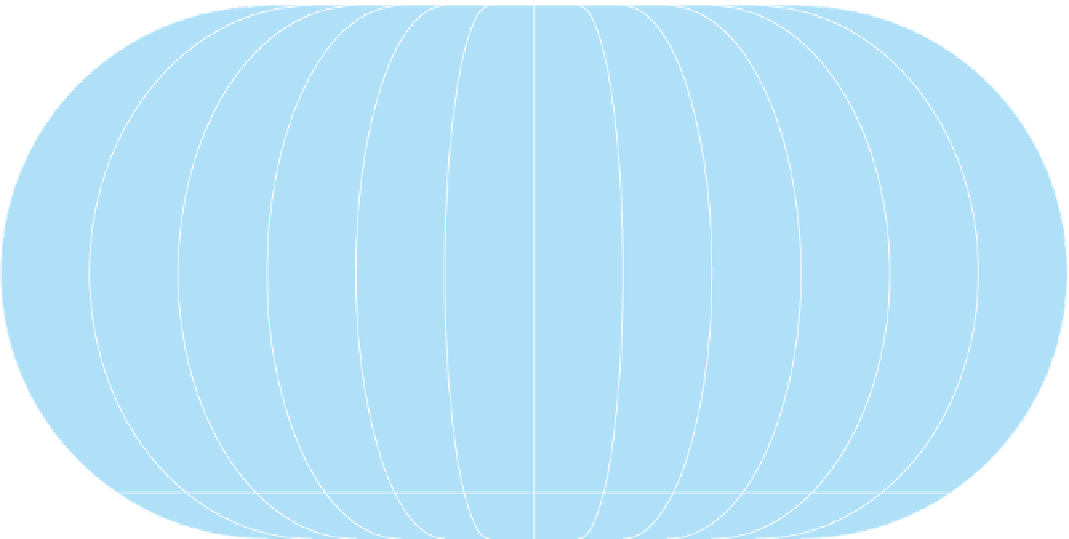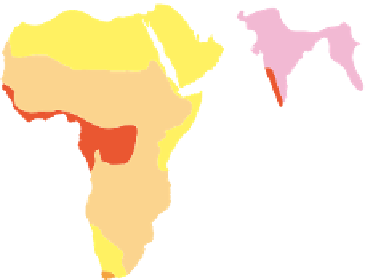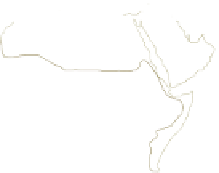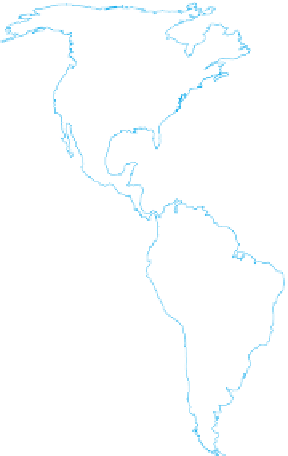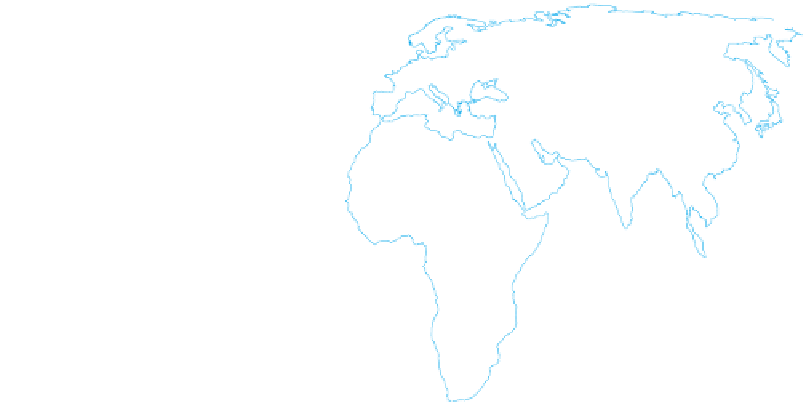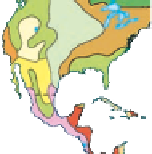Geoscience Reference
In-Depth Information
The Relationship of Climate and
Vegetation: The Character and
Distribution of Global Biomes
effect, the same as acknowledging the many different variables
that influence the climate system. Remember these relation-
ships in the following discussion.
A good way to study the relationship between climate and
vegetation is through the concept of global biomes. A
biome
is a definable geographic region that is classified and mapped
according to the predominant vegetation and organisms of that
particular environment. Each biome is a distinct ecosystem and
thus has a particular community of plants, animals, and microor-
ganisms that are linked by energy and nutrient flows. Although
ecosystems can be viewed at many different scales, this part of
the chapter focuses on the plant communities in large areas that
typically cover thousands of square kilometers. Although the
biome concept also includes information about the character of
soils, the major biomes are described here because vegetation
is the most visible component of a biome. The relationship of
soils to vegetation and climate will be covered in Chapter 11.
This section of the chapter focuses on geographic units as
they relate to
potential natural vegetation
—that is, the veg-
etation you would find in a region if humans did not modify
the landscape. Figure 10.6 is a map showing the distribution
of the 12 biomes, and Table 10.1 outlines their fundamental
characteristics. You should refer to this map and table fre-
Many different factors influence the geographic distribution of
plants and biomass. Remember that environmental variables af-
fect one another in holistic ways to form distinct geographic
patterns. The study of plant geography is no exception. In order
to understand these interactions, however, it is first essential to
fully appreciate the impact certain individual variables have on
these distributions.
The most important factor influencing the geographic dis-
tribution of vegetation is climate. Secondary factors such as
geology, soils, landscape position, and human behavior also
influence the pattern of vegetation on Earth and are discussed
later in the chapter. For now, however, the focus is on the rela-
tionship between climate and vegetation. You saw in Chapter 9
how vegetation reflects the geographic distribution of climates.
These patterns, in turn, are related to many other primary fac-
tors, including latitude, proximity to oceans, and the global at-
mospheric circulatory system. In this context, to say that the
geographic distribution of vegetation is related to climate is, in
Biome
The complex of living communities maintained by the cli-
mate of a region and characterized by a distinctive type of vegetation.
Potential natural vegetation
The vegetation that would occur
naturally within a specific area if no human influence occurred.
30
°
30
°
Tropic of Cancer
AT L A N T I C
O C E A N
PA C I F I C
O C E A N
Equator
PA C I F I C
O C E A N
0
°
0
°
I N D I A N
O C E A N
Tropical Rainforest
Tropical Deciduous Forest and Scrub
Midlatitude Deciduous Forest
Mediterranean Woodland and Shrub
Midlatitude Coniferous Forest
Boreal Forest
Tropical Savanna
Midlatitude Grassland
Hot and Dry Desert
Semi-arid and Cold Desert
Tundra
Arctic and Alpine Ice
Tropic of Capricorn
30
°
60
°
90
°
60
°
30
°
0
°
30
°
60
°
90
°
120
°
150
°
Figure 10.6 Map of global biomes.
Compare this figure with Figure 9.2, which shows the distribution of climate regions, and note
some of the similarities and differences.
